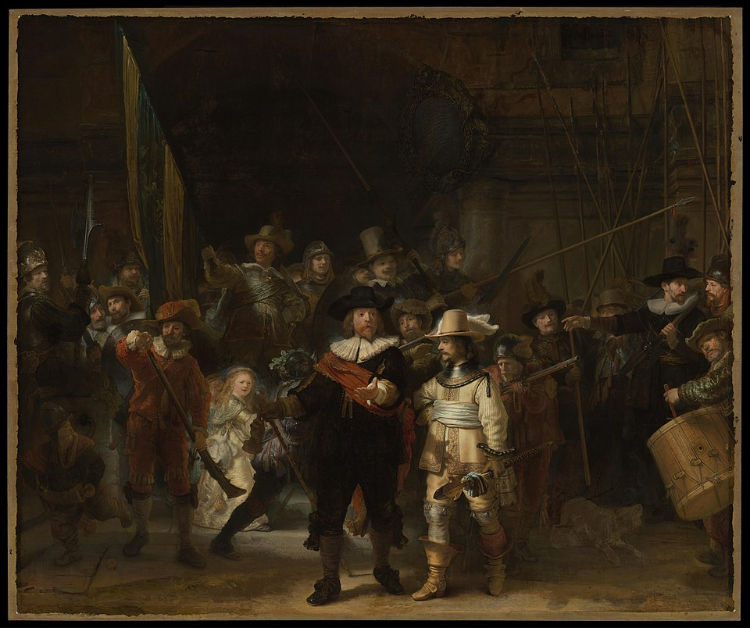The Night Watch by Rembrandt

The Night Watch by Rembrandt
The Night Watch is Rembrandt's take on a common genre during his time - portraits of Dutch militia members. Rembrandt's version differed from his peers via his use of dynamic composition. Typical portrait settings had the subjects in very static poses, but Rembrandt's was a snapshot of a moment in time, staying consistent with baroque elements of painting.
Funnily enough, the action in The Night Watch, which was named decades after it was painted, didn't take place at night. It was so named because the lacquer veneer that coated the painting had darkened over time, making it look much darker than originally intended.
License to kill (chickens)
There's another figure in the painting that [spoiler alert] doesn't exist. The girl in the spotlight
to the left of the two militia officers is swinging what is apparently a dead chicken from her side.
She and forlorn Foghorn Leghorn were placed in the painting to represent the militia and their
emblem - a rooster's claw.
Personally, I would've expressed the metaphor via a bucket of KFC, but, then again, I'm not Rembrandt.
Spotlight on the actors
In addition to dynamic composition, Rembrandt used tenebrism to accentuate the action in the painting.
The captain of the militia and his lieutenant are spotlit in the forefront accentuated their rank in
the group.
Typically, the lightening for these types of portraits was more consistent, and the alteration in this painting caused consternation between Rembrandt and members of the militia. The members felt that they didn't receive appropriate representation in the piece, even after paying the standard fee for sitting for such a portrait.
If it's any consolation, fellas, people remember this militia portrait far more than any other, so even if you played Janitor #2 in the back row, you're still more famous than people who actually had their good side painted.
